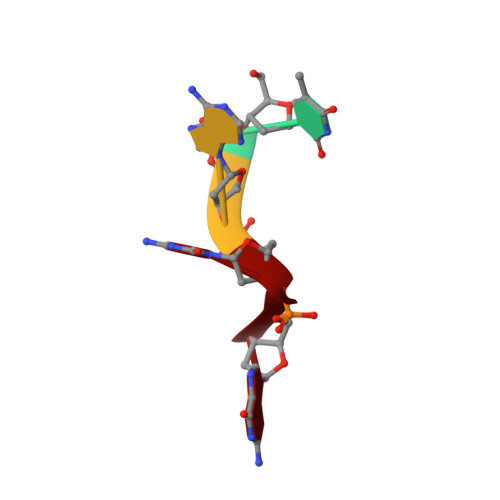A non-canonical DNA structure enables homologous recombination in various genetic systems
Masuda, T., Ito, Y., Terada, T., Shibata, T., Mikawa, T.(2009) J Biol Chem 284: 30230-30239
- PubMed: 19729448
- DOI: https://doi.org/10.1074/jbc.M109.043810
- Primary Citation of Related Structures:
2RPD, 2RPE, 2RPF, 2RPH - PubMed Abstract:
Homologous recombination, which is critical to genetic diversity, depends on homologous pairing (HP). HP is the switch from parental to recombinant base pairs, which requires expansion of inter-base pair spaces. This expansion unavoidably causes untwisting of the parental double-stranded DNA. RecA/Rad51-catalyzed ATP-dependent HP is extensively stimulated in vitro by negative supercoils, which compensates for untwisting. However, in vivo, double-stranded DNA is relaxed by bound proteins and thus is an unfavorable substrate for RecA/Rad51. In contrast, Mhr1, an ATP-independent HP protein required for yeast mitochondrial homologous recombination, catalyzes HP without the net untwisting of double-stranded DNA. Therefore, we questioned whether Mhr1 uses a novel strategy to promote HP. Here, we found that, like RecA, Mhr1 induced the extension of bound single-stranded DNA. In addition, this structure was induced by all evolutionarily and structurally distinct HP proteins so far tested, including bacterial RecO, viral RecT, and human Rad51. Thus, HP includes the common non-canonical DNA structure and uses a common core mechanism, independent of the species of HP proteins. We discuss the significance of multiple types of HP proteins.
Organizational Affiliation:
Graduate School of Nanobioscience, Yokohama City University, Yokohama 230-0045, USA.














